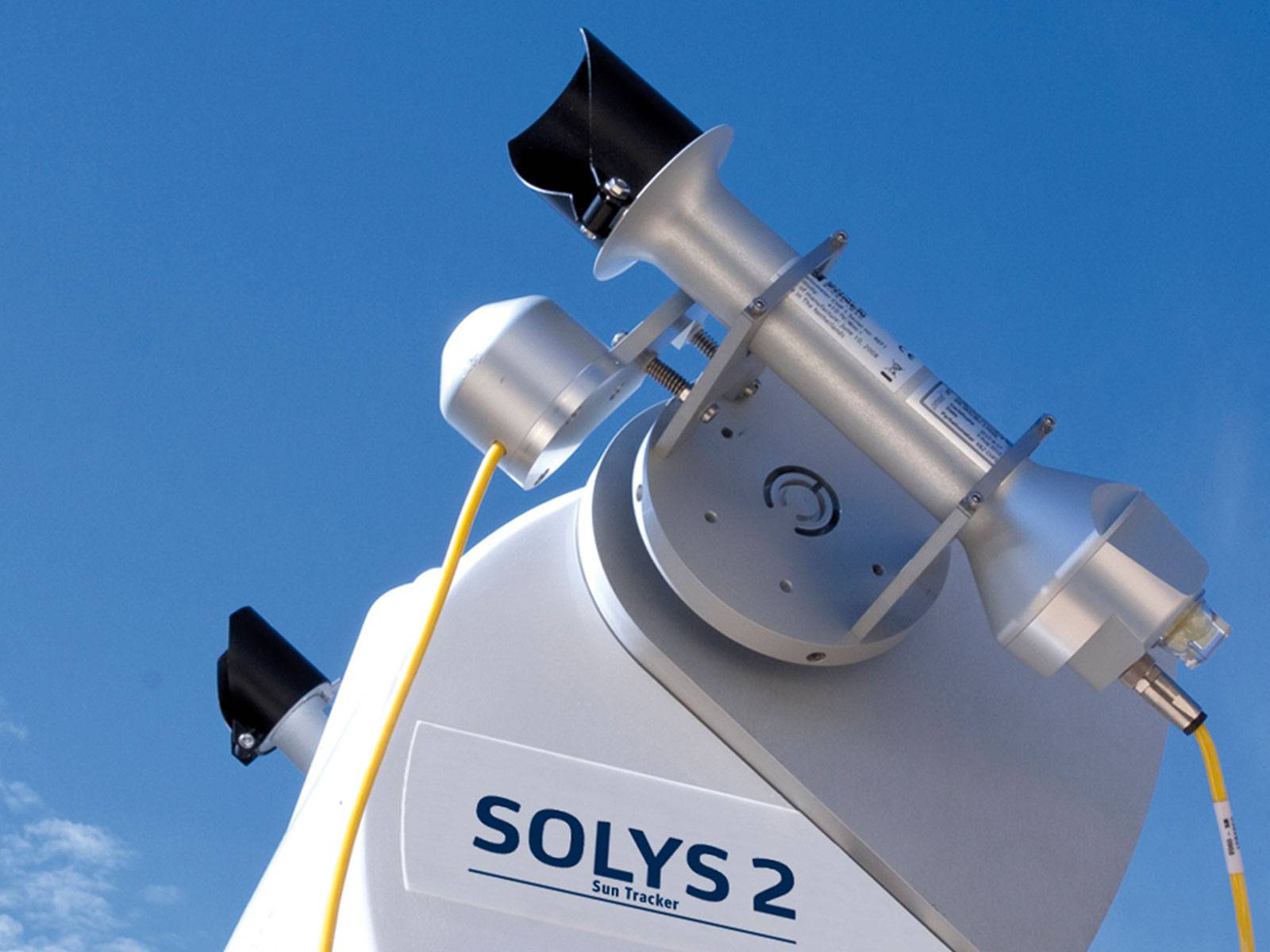

The sun tracker provides a stable mounting for the pyrheliometer and moves horizontally (azimuth) and vertically (zenith) to follow the solar arc. Stepping motors controlled by a microprocessor drive through belts or gears to provide movement with the desired torque and accuracy. An on-board programme requires accurate longitude, latitude, altitude, date, and time information for the measurement site. It then calculates the current position of the sun and points the pyrheliometer and shading assembly towards it.
Sun trackers are widely used in networks of solar monitoring stations that measure direct, diuse and global radiation, for inputs to weather forecasting and climate models. Other applications include atmospheric chemistry research, pollution forecasting and materials testing.
With growing interest in renewable energy good quality solar radiation data is becoming increasingly important, particularly the direct component, with regard to photovoltaic systems and thermal energy solar collectors. Activities include research and development, production quality control, determination of optimal power plant locations, monitoring the efficiency of installed systems and predicting the output under various sky conditions.